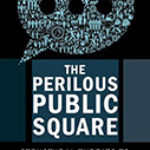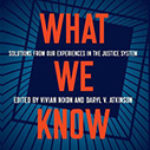The Ku Klux Klan In The Heartland

Author: James H. Madison
Publisher: Bloomington: Indiana University Press, 2020. 264p.
Reviewer: Britta Crandall | September 2021
On January 6, 2021, a mob of supporters of President Donald Trump stormed the United States Capitol. While this infamous moment in American history had singular motivations as well as ramifications, there is little question that part of this event can be traced back to the nation’s long-standing, although intermittent experience with white supremacy, a phenomenon that began with African slavery, continuing through the Civil War and into late 19th century and 20th century white power movements.
Jump back to the same Capitol building almost a century prior, to a sultry summer day in 1925. Here too American flags and Christian crosses were carried by thousands of citizens who gathered near the iconic domed building. Except in this case, participants were members and supporters of the Ku Klux Klan. Once assembled, a good share took off their hoods to present each other’s countenances. Throngs of spectators cheered them along the entire route, and the Washington Post reported at the time that the march was “one of the greatest demonstrations this city has ever known.” As University of Indiana historian James H. Madison writes in his timely The Ku Klux Klan in the Heartland, in this highly segregated city along the Potomac River congregated more than a handful of Hoosiers (those from Indiana) eager to remake the nation into their own vision.
While the first Klan movement, started in the vanquished Confederacy right after the Civil War, was the bloodiest and most patently nefarious, Madison’s book focuses on the second wave in the 1920s. It was a period when the organization was “as dark as the night and American as apple pie.”
The Klan that exploded on the scene in the 1920s existed at a peculiar moment in U.S. history: the Great War on the home-front entailed propaganda intended to terrify the public about German Huns and Russian Bolsheviks. Legions of Americans, the author is convinced, in the post-bellum years thus shifted their suspicions to a broad set of enemy aliens within their country’s borders. Their solace was “American first.”
While the second KKK movement started in Georgia, it quickly spread out to every state. Contrary to what is often assumed, most of the loyalties were to the local “Klavern,” a local unit of the Klan. So by the end of the decade, several millions of white Protestant, native-born citizens “paid their dues and donned their robes” in all states. The movement both stoked and benefitted from racial tensions — an “us versus them” binary. “Who is an American?” had always been a question. But for the second Klan the central question was instead, “Who is 100 percent American?” Madison explains, “[i]n its elaborate answers, the Klan deployed the worst of the nation’s intolerance to make bigotry respectable among those who considered themselves the most decent of citizens.”
But it was in the heartland, the author posits, where the Klan “found its best people.” And the author believes that due to its outsized white Protestant population, and absence of minorities, Indiana was especially susceptible to the Klan’s exclusionary gospel.
“Ain’t God Good to Indiana?” This is from the pen, in 1919, of bard William Hershchell. In fact, Hoosiers congratulated themselves on being especially good Americans — “friendly, commonsense, and good people” — of the midsection who brought dishes to church suppers and would help a neighbor fix broken basement steps. Or as one of the state’s most prominent authors wrote in 1928, they were known for “seeing life steadily and seeing it whole: good old Indiana, with an encyclopedia and a bath-tub in every farmhouse.” Yet, behind the upstanding public persona lay contradictions and hypocrisies. For one contemporary writer, this very white, tribal state still “holds by the pioneering culture and its offshoots—old-fashioned cookery, old-fashioned decencies, old-fashioned virtues, old-fashioned vice, old-fashioned bigotries, old-fashioned philosophies springing out of the soil and smelling of the pennryrile and the sassafrock.”
Madison urges us to see that, despite some of the responsibility unquestionably resting with the messianic local Klan leaders who manipulated their followers, fault also lies “in the hearts” of Klan members in rural farm towns, cities, social clubs, and political offices. This is tied to the fact that, no matter how much it pains us to witness today, Klan men and women believed they were fighting a moral crusade: good Christians and good Americans against nefarious forces bent on wrecking the beloved nation.
Impossibly, upwards of one-third of white Protestant men in Indiana joined the Klan, with an uncounted number of women. And, contrary to what is believed about the midwestern Klan being exclusively “hill-billies, the Great Unteachables,” (borrowing a phrase from the time) a strong share of the Klan make-up came from the middle and professional classes: Methodists, police officers, teachers, mayors, merchants, and industrialists all joined up. One of the most sought-after speakers in central Indiana was Daisy Douglas Barr, a Quaker minister. Another observer of the era: “In some Indiana towns, there’s hardly an extra clean sheet on hand in case of accidents or company coming.”
Indiana Klan fears and hate were overwhelmingly targeted against Catholics and immigrants, and not blacks who were so few in number in the state. And contrary to popular lore, there was little physical violence. But in some ways, who needed violence, Madison asks, when you had the hoods, masks, and burning crosses? Another “non-violent” method to perpetuate this inherently violent ideology was through anti-Catholic and immigrant laws, and also the embrace of Prohibition given the belief that foreigners were Vatican-worshipping sots. Madison also observes that while criticism of the Klan was muted, there were voices such as the Fort Wayne Daily that excoriated the group as “the most un-American, vicious and impossible organization that ever insulted the nation.” The author concludes that, ironically, the Klan’s circa 1920s hatred and bigotry helped galvanize subsequent “voices of inclusion” later on during the Civil Rights Movement and elsewhere.
Madison thinks that the onset of the Great Depression and the ensuing economic and social tumult helped distract citizens from the Klan’s bigotry. But it did not kill the movement—or the sentiment. In the 1960s, in what became the third phase of the Klan, “pointed hoods returned to the Midwest to cover heads filled with narrow, hate-filled racism.” Plus ça change. The scores of historic, arresting images included in this heartfelt work on a necessary but highly displeasing subject are worth the book’s retail price alone. Readers eager to get a sense of the evolution of the harrowing events and images of January 6 should also read Professor Madison’s book.
Britta Crandall is a Professor of Latin American Studies at Davidson College.


